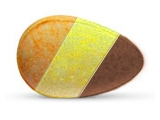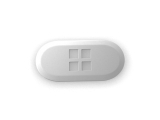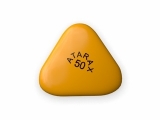Can erectile dysfunction be cured
Erectile Dysfunction (ED) is a common problem affecting men all over the globe. It is estimated that over 30 million men in the United States alone have ED. ED refers to the inability to achieve or maintain an erection sufficient enough for sex. The condition can have adverse effects on a man's self-confidence, relationships and overall quality of life.
The good news is that ED is treatable and curable. There are several treatment options available to men suffering from ED. The choice of treatment usually depends on the severity of the condition, the cause of the condition and the preferences of the individual.
This article will explore the various treatment options available for ED. We will look at the pros and cons of each treatment, their effectiveness, and other important factors to consider. So, if you or someone you know is suffering from ED, this article will provide you with valuable information that will help you make an informed decision about the best course of action to take.
Understanding Erectile Dysfunction
What is Erectile Dysfunction?
Erectile dysfunction (ED) is a medical condition characterized by difficulties in achieving and/or maintaining an erection sufficient for sexual activity. While occasional difficulties in achieving an erection are common, persistent problems may indicate the presence of ED.
Causes of Erectile Dysfunction
ED can be caused by a variety of physical and psychological factors. Physical factors may include conditions such as obesity, diabetes, hypertension, and heart disease. Psychological factors may include stress, anxiety, depression, and relationship issues. Some men may experience ED as a side effect of certain medications or medical treatments.
Diagnosis of Erectile Dysfunction
Diagnosis of ED typically involves a physical exam, as well as a detailed medical and sexual history. Your doctor may also order blood tests to check for underlying conditions, such as diabetes or low testosterone levels. In some cases, additional testing, such as a penile ultrasound or nocturnal penile tumescence test, may be recommended.
Treatment Options for Erectile Dysfunction
Treatment for ED depends on the underlying cause. Treatment may involve lifestyle changes, such as exercise and weight loss, or medication, such as Viagra or Cialis. Psychological counseling or couples therapy may also be helpful for those experiencing ED as a result of relationship issues or psychological factors. In some cases, surgery may be recommended.
It is important to speak with your healthcare provider if you are experiencing symptoms of ED, as prompt diagnosis and treatment can help improve your sexual health and overall well-being.
Medical Treatment Options
Oral Medications
One of the most commonly prescribed treatments for erectile dysfunction (ED) is oral medication, such as sildenafil (Viagra), tadalafil (Cialis), or vardenafil (Levitra). These medications work by increasing blood flow to the penis, helping to achieve and maintain an erection during sexual stimulation. They are usually taken 30 minutes to an hour before sexual activity and require sexual stimulation to be effective. However, they come with potential side effects such as headaches, flushing, and indigestion, and should be used cautiously if you are taking certain medications or have certain medical conditions.
Injections
An injection of medication directly into the penis can also be used to treat ED. Alprostadil is a medication that relaxes blood vessels and increases blood flow, allowing for an erection. This medication is self-injected into the side of the penis prior to sexual activity. While this treatment is effective for many men, it can cause pain and sometimes lasting erections, known as priapism.
Vacuum Erection Devices
A vacuum erection device (VED) is a medical device that uses a vacuum to pull blood into the penis, creating an erection. The device consists of a plastic cylinder, a pump, and a constriction ring. The cylinder is placed over the penis, and the pump is used to create a vacuum, which draws blood into the penis. Once an erection is achieved, the constriction ring is placed at the base of the penis to maintain the erection. VEDs are generally safe and have few side effects, but they can be awkward to use and may not be effective for all men.
Penile Implants
A penile implant is a surgical procedure that involves the insertion of a semi-rigid or inflatable device into the penis. There are two types of devices: semi-rigid rods and inflatable devices. Semi-rigid rods are permanently implanted into the penis, while inflatable devices consist of a pump that is implanted in the scrotum and a reservoir that is implanted in the abdomen. When the pump is activated, it fills the inflatable cylinders with fluid, creating an erection. While this is the most invasive treatment option, it is also the most effective and can provide a permanent solution for ED.
Oral Medications
1. PDE5 Inhibitors
Phosphodiesterase type 5 (PDE5) inhibitors are the most commonly prescribed oral medication for erectile dysfunction. They work by inhibiting the enzyme that causes the penis to lose its erection. The most well-known PDE5 inhibitors are sildenafil (Viagra), tadalafil (Cialis), and vardenafil (Levitra).
These medications work by increasing blood flow to the penis when sexually aroused. They are taken at least 30 minutes before sexual activity and can have an effect for up to 36 hours, depending on the medication. However, they do not work in the absence of sexual stimulation, and there can be side effects such as headaches, flushing, and upset stomachs.
2. Other Medications
Besides PDE5 inhibitors, there are other oral medications that may be prescribed for erectile dysfunction:
- Alprostadil: This medication can be taken orally or injected into the penis, and it is used to increase blood flow.
- Yohimbine: This medication comes from the bark of the yohimbe tree and is used to improve sexual function.
- Testosterone replacement therapy: If the cause of the erectile dysfunction is low testosterone, replacement therapy may be prescribed.
It is important to talk to a doctor before taking any oral medication for erectile dysfunction, as they may interact with other medications or have dangerous side effects in some men.
Injectables and Suppositories
Injectables
Injectable medications can be an effective treatment option for those experiencing erectile dysfunction. The medication is injected directly into the side of the penis, causing an erection to occur within 5 to 20 minutes. The medication used for injection is usually either alprostadil or a combination of alprostadil, papaverine, and phentolamine. These medications work to increase blood flow to the penis, resulting in an erection. It is important to note that injection therapy can cause pain or bruising at the injection site, and should only be used under the guidance of a healthcare provider.
Suppositories
Suppositories are another treatment option for erectile dysfunction. The medication used for suppositories is alprostadil, which is a prostaglandin E1 analogue. The suppository is inserted into the urethra using a small applicator. The medication is absorbed through the urethra and into the penis, causing an erection to occur within 5 to 10 minutes. Like injection therapy, suppositories can cause pain or discomfort, and should be used under the guidance of a healthcare provider.
Conclusion: Injectable medications and suppositories can be effective treatment options for erectile dysfunction. However, it is important to consult with a healthcare provider to determine the most appropriate treatment plan and to address any potential side effects or complications.
Vacuum Devices and Penile Implants
Vacuum Devices
Vacuum devices are non-invasive treatment options to help men with erectile dysfunction. There are two main types of vacuum devices: manual and battery-powered. The device creates negative pressure around the penis to draw blood into the corpora cavernosa, creating an erection. The vacuum device should be used for a maximum of 30 minutes, and it is recommended to use a constriction ring at the base of the penis to maintain the erection after the device is removed. Side effects of vacuum devices can include bruising, numbness, and decreased penile sensitivity.
Penile Implants
Penile implants are an invasive treatment option for men with erectile dysfunction who have not had success with other treatments. There are two main types of penile implants: inflatable and semi-rigid. Inflatable implants involve a pump implanted in the scrotum that activates the release of fluid into inflatable cylinders in the penis, creating an erection. A semi-rigid implant consists of malleable rods implanted in the penis that can be adjusted to create an erection. Penile implants have high patient satisfaction rates, but they involve surgery and potential complications, such as infection or implant failure.
- Vacuum devices are non-invasive treatment options for erectile dysfunction
- There are two main types of vacuum devices: manual and battery-powered
- Vacuum devices can cause side effects such as bruising, numbness, and decreased penile sensitivity
- Penile implants are an invasive treatment option for erectile dysfunction that involve surgically implanted devices
- There are two main types of penile implants: inflatable and semi-rigid
- Penile implants have high patient satisfaction rates, but they involve potential complications such as infection or implant failure
Lifestyle Changes and Natural Remedies
Exercise
Physical activity is not only important for overall health, but it can also improve erectile function. Exercise helps to maintain healthy blood vessels and reduces the risk of cardiovascular disease, which is a major cause of ED. Men who are physically active have a lower risk of experiencing ED compared to those who are sedentary. Aim for at least 30 minutes of moderate exercise most days of the week.
Diet
Eating a healthy diet can improve overall health and may also help to treat ED. A diet rich in fruits, vegetables, lean proteins, and whole grains can help to maintain healthy blood vessels and reduce the risk of cardiovascular disease. Avoid foods that are high in saturated fats, salt, and sugar, as they can increase the risk of ED. Consider limiting alcohol intake, as excessive drinking can also lead to ED.
Herbal Remedies
There are a variety of herbal remedies that have been used for centuries to treat ED. Some of the most popular options include ginseng, horny goat weed, and yohimbine. However, the effectiveness of these remedies is not well-supported by scientific evidence, and they may interact with other medications or cause side effects. Always speak with a healthcare provider before taking any herbal supplements.
Acupuncture
Acupuncture is a traditional Chinese medicine technique that involves the insertion of thin needles into specific points of the body. Some men have reported improvement in their ED symptoms after acupuncture treatment. However, more research is needed to determine the effectiveness of acupuncture for ED. Always ensure that you receive acupuncture treatment from a qualified and licensed practitioner.
Counseling
Stress, anxiety, and depression can all contribute to ED. If psychological factors are causing your ED, then counseling or therapy may be an effective treatment option. A therapist can help you to manage stress and anxiety, improve communication with your partner, and develop coping skills. In some cases, couples therapy may also be recommended to address relationship issues that may be contributing to ED.
Summary
Lifestyle changes and natural remedies may improve ED symptoms, but they are not effective for everyone. It is important to speak with a healthcare provider before starting any new treatment or supplement, as they can help to identify the underlying causes of ED and recommend the best course of treatment.
| Lifestyle Changes and Natural Remedies | |
|---|---|
| Benefits | Risks |
|
|
Follow us on Twitter @Pharmaceuticals #Pharmacy
Subscribe on YouTube @PharmaceuticalsYouTube





Be the first to comment on "Can erectile dysfunction be cured"